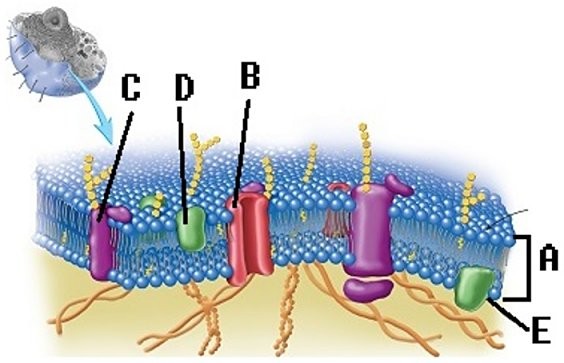List the four types of general sensory receptors based on function, and identify the type of stimulus that excites each type
A) nociceptors (temperature), thermoreceptors (pain), mechanoreceptors (physical distortion), and chemoreceptors (chemicals dissolved in body fluids)
B) nociceptors (chemicals dissolved in body fluids), thermoreceptors (physical distortion), mechanoreceptors (pain), and chemoreceptors (temperature)
C) nociceptors (physical distortion), thermoreceptors (chemicals dissolved in body fluids), mechanoreceptors (pain), and chemoreceptors (temperature)
D) nociceptors (temperature), thermoreceptors (physical distortion), mechanoreceptors (temperature), and chemoreceptors (pain)
E) nociceptors (pain), thermoreceptors (temperature), mechanoreceptors (physical distortion), and chemoreceptors (chemicals dissolved in body fluids)
Answer: E
You might also like to view...
The period of time during which an excitable membrane can respond again, but only if the stimulus is greater than the initial stimulus is the ________.
Fill in the blank(s) with the appropriate word(s).
Children who suffer from protein starvation have bloated bellies of ascites (an accumulation of fluid in the tissue spaces of the abdomen). How would a shortage of protein in the diet cause this condition?
What will be an ideal response?
Using the figure below, identify the labeled part.

1) Label A: ______________________________
2) Label B: ______________________________
3) Label C: ______________________________
4) Label D: ______________________________
5) Label E: ______________________________
6) Label F: ______________________________
7) Label G: ______________________________
8) Label H: ______________________________
9) Label I: ______________________________
10) Label J: ______________________________
11) Label K: ______________________________
12) Label L: ______________________________
13) Label M: ______________________________
14) Label N: ______________________________
15) Label O: ______________________________
16) Label P: ______________________________
17) Label Q: ______________________________
18) Label R: ______________________________
19) Label S: ______________________________
20) Label T: ______________________________
21) Label U: ______________________________
22) Label V: ______________________________
23) Label W: ______________________________
24) Label X: ______________________________
 What structure does "E" represent on the diagram of the plasma membrane?
What structure does "E" represent on the diagram of the plasma membrane?
A. Receptor protein B. Internal membrane surface C. Membrane channel protein D. Peripheral protein E. Phospholipid bilayer